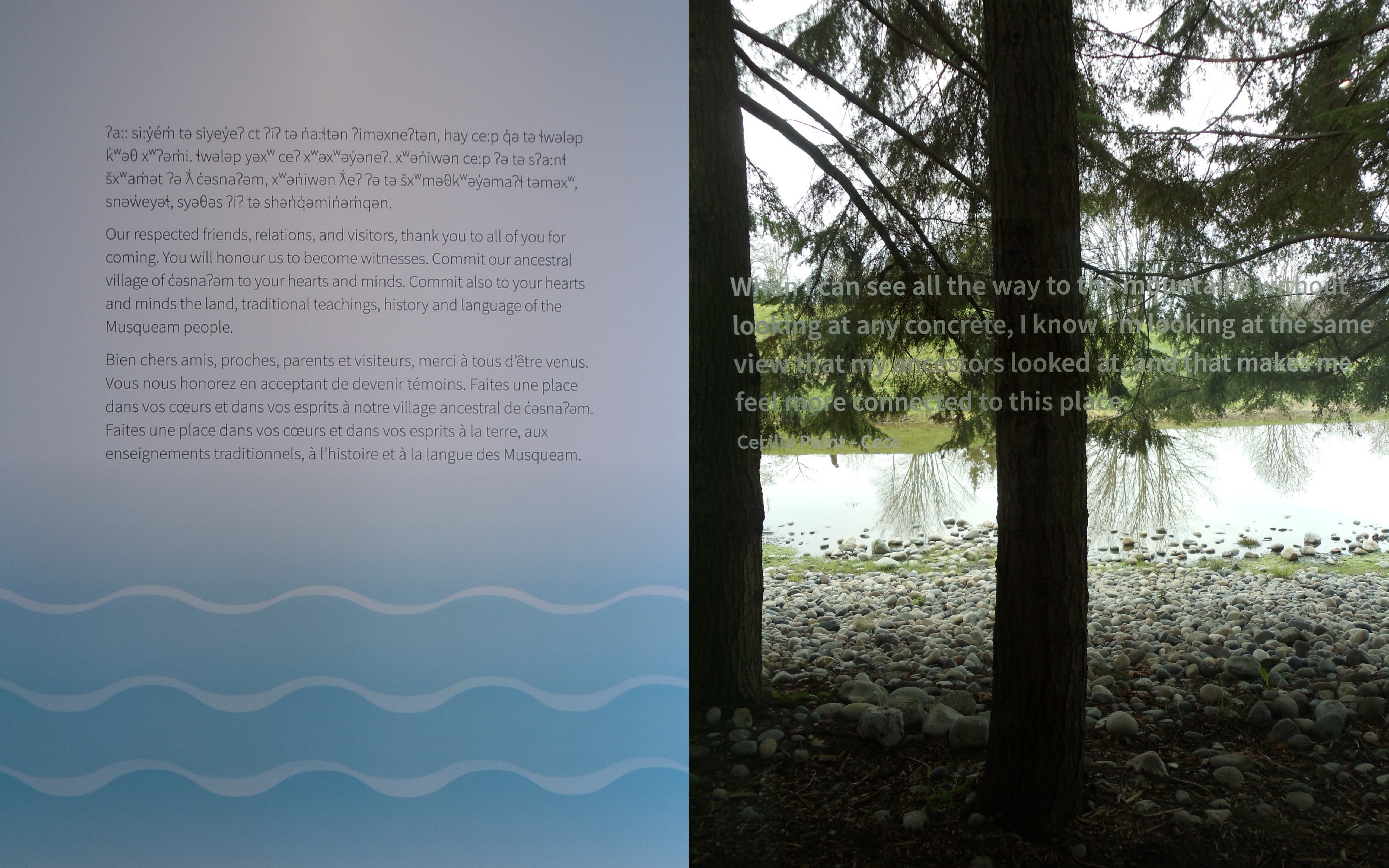MOA: c̓əsnaʔəm (the city before the city)
c̓əsnaʔəm (the city before the city) is a three-part exhibit in three locations: the Musqueam Cultural Education Resource Centre, the Museum of Vancouver, and the Museum of Anthropology at UBC (MOA). The exhibitions aim to expand understanding about the history of Vancouver predating colonial settlement, and raise awareness about who the Musqueam people are, in present day.
I visited the exhibit in MOA, located in the O’Brian & Audain gallery area. Interestingly enough for an exhibition space like MOA, with it’s extensive collections of First Nations artefacts, this exhibit has no Musqueam artifacts on display. Instead, the exhibit here uses multimedia –a combination of video, posters, text, images, audio and staged exhibit areas, to explore questions pertaining to ‘Musqueam identity and worldview’ with emphasis on educating visitors about Musqueam with voices from Musqueam.
The signs introducing the exhibit indicate that c̓əsnaʔəm is the Musqueam name of the five thousand-year old settlement, currently popularly known as Marople, in the Vancouver area today. Although in recent times the main issue in public awareness is about protests surrounding digging up the bones of Musqueam ancestors, the exhibit aims to make visitors aware how this is but a continuation of a long history of archeological excavations and artifact collections in the area. Perhaps it’s because of this long history of the fetishization of Musqueam cultural artifacts that none are on display in this exhibit dedicated to education.
The exhibition area is comprised of a long corridor with images and quotes on one wall, and a window to the outside on the other. Through the window, between slim tree limbs, one can catch a glimpse of the Haida house poles and Musqueam house boards outside. Quotes stenciled in white on the glass speak to the connection people feel between themselves and the landscape outside; the landscape is the same in the stories handed down, as it is today regardless of the changes in what is constructed on the land.
This focus on the importance of oral histories is reflected in the rest of the exhibit. All around, stories, images, sounds and quotes from a first-person perspective discuss the histories, and what it means to be Musqueam today. The hən̓q̓əmin̓əm̓ language is carefully integrated into various aspects of the exhibit, namely in the audio recordings, but the majority of the exhibition is in English. Quotes on the wall, interview recordings, photo captions…all are in English; even the audio subtitles are mainly translated in English.
English use here helps expand the numbers of audience members the exhibit can reach directly, an important point given the purpose of exhibit as a way to educate the general public about how Musqueam history is Vancouver history. Through the perspective of Musqueam past and present, English is repurposed from a language of oppression into a vehicle by which these voices can reach a wider audience– reminding all of the continued existence of Musqueam today, however much the land has changed.
